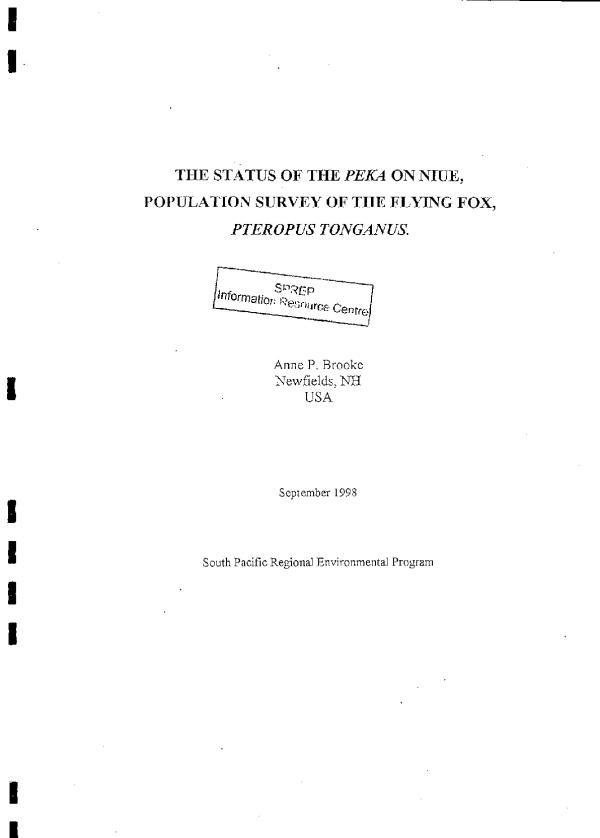Localisation
SPREP LIBRARY
Éditeur
Secretariat of the Pacific Regional Environment Programme (SPREP)
Année de publication:
1998
Lieu de publication
Apia, Samoa
Description physique:
Available online
Numéro d'appel
[EL]
Pays concernés
Niue
Langue
English
Identifiant de dossier:
205
Ancien numéro d'identification PEIN:
79998
Notes générales
Population estimation|Hunter information
Disponible en ligne
Rubrique(s) thématique(s)
Training of conservation officers for conducting bat surveys
Long-term monitoring
Sustainabilty surveys
Reproduction
Status of flying fox population index
Future population management
Résumé
During September 1998 field surveys were conducted to estimate the population of Pteropus tonganus and three Huvalu Forest conservation officers were trained to monitor bats by evening dispersal counts. The island-wide population was estimated at 1,900-3,800 bats from dispersal counts of colonies, while at the 22 stations established to monitor the long-term changes in the bat population, 447 bats were sighted. Only one colony was identified in the Huvalu Forest, in or near the Liku tapu area, while the two largest colonies were found northeast of the Huvalu Forest. We interviewed or had written questionnaire responses from 27 hunters who shot ca 574 bats (21.3 bats/hunter) during the 1997-1998 season. As these responses were inflated by a small number of, good' hunters, it is likely that a total of 1,000 - 1,500 bats were shot. A small but constant amount of hunting occurs throughout the year and an unknown number of bats are shot outside of the legal hunting season. There is little pressure, legal or social, for hunters to comply with the two-month limit on hunting. Most bats are shot in flight at dusk or at dawn but when hunters locate a colony, many bats can be shot at one time. Based on the current population estimate of 1,900-3,800 animals, a maximum of 750 bats can be sustainably harvested. If the current level of hunting continues the population will become increasingly smaller and risk extinction from overhunting, cyclones, or disease introduced by people. A population of at least 8,000 bats is recommended to maintain an annual sustainable hunt of 1,500 and to be resistant to other perturbations, such as cyclones and disease. A temporary ban on hunting for two years will allow the population to increase to this number.
Localisation
SPREP LIBRARY
Éditeur
Secretariat of the Pacific Regional Environment Programme (SPREP)
Année de publication:
1998
Lieu de publication
Apia, Samoa
Description physique:
Available online
Numéro d'appel
[EL]
Pays concernés
Niue
Langue
English
Identifiant de dossier:
205
Ancien numéro d'identification PEIN:
79998
Notes générales
Population estimation|Hunter information
Dossier créé: 06-Jun-2018
Dossier modifié: 16-Feb-2022

